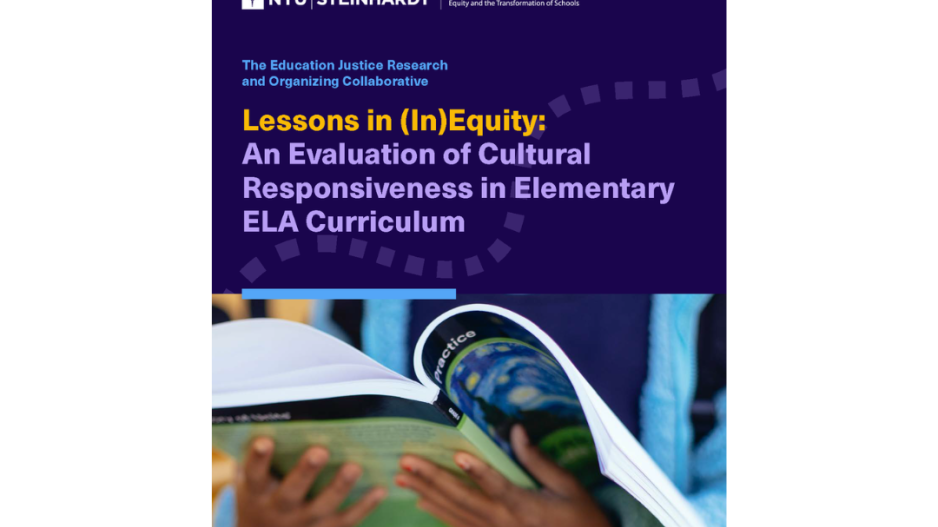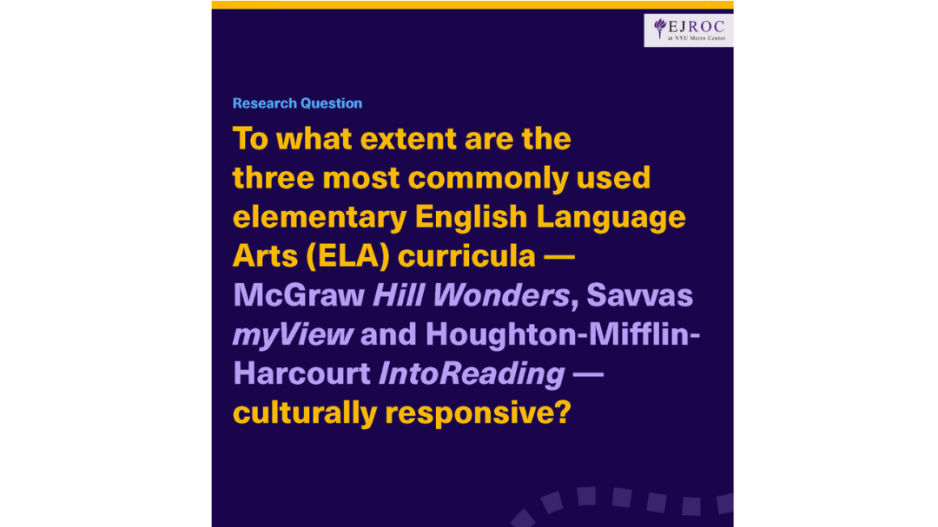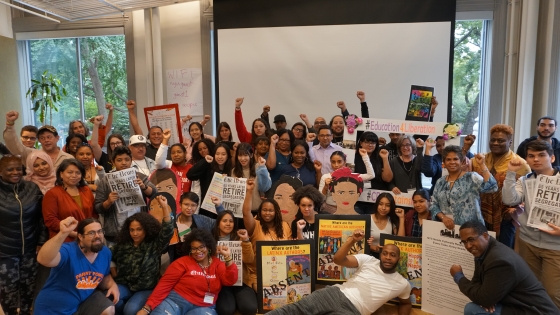Learn more about this research from EJ-ROC:
Download Full InventoryEJ-ROC Research Statement
Read EJ-ROC's Research Statement here:
Executive Summary
“When children cannot find themselves reflected in the books they read, or when the images they see are distorted, negative, or laughable, they learn a powerful lesson about how they are devalued in the society of which they are a part.” - Rudine Sims Bishop
Debates about public school curriculum may be as old as public schools themselves. Curriculum is one of the most essential aspects of schooling; it is the GPS of the classroom, determining where the teacher is going, which vehicle they use to get there, and what route to take. By shaping the content and the skills that students learn, curriculum reflects and shapes culture itself: the knowledge, beliefs, norms and social behaviors that our schools encourage in the next generations.
Recently, curriculum has taken center stage in the public conversation about schooling. While there has been mass media coverage of these debates, there is a lack of substantive discussion on culturally responsive education – the educational approach that directly addresses issues of identity, culture and power at the center of these debates. At this moment, NYU Metro Center set out to answer the question: just how culturally responsive are public school curricula?
We worked with a diverse team of public school parents, students and educators to analyze samples of curriculum from three of the nation’s most widely used elementary school English Language Arts (ELA) curricula - McGraw Hill’s Wonders, Savvas’ myView, and Houghton Mifflin Harcourt’s Into Reading - using the Culturally Responsive ELA Curriculum Scorecard.
This community research team found:
- All three curricula were Culturally Destructive or Culturally Insufficient.
- All three curricula used superficial visual representations to signify diversity, especially skin tone and bodily presentation, without including meaningful cultural context, practices or traditions.
- All three curricula were dominated by one-sided storytelling that provided a single, ahistorical narrative.
- All three curricula used language, tone and syntax that demeaned and dehumanized Black, Indigenous and characters of color, while encouraging empathy and connection with White characters.
- All three curricula provided little to no guidance for teachers on engaging students’ prior knowledge, backgrounds and cultures; or reflecting on their own bias, beliefs and experiences.

We found that these three curricula, which collectively reach millions of students across the country, have deficits that are mostly not being raised in the current public debate about curriculum. Their texts, language, tone and guidance communicate harmful messages to students of all backgrounds, especially Black, Indigenous, students of color, LGBTQIA+ students, and students with disabilities.
Our research indicates that there is an urgent need for public school curriculum to:
- Represent full, complex characters from marginalized groups, so that students can have a more holistic understanding of themselves and others, and the skills to navigate the diverse society they are a part of;
- Shift the narrative from single to multiple perspectives that can give students the opportunity to comprehend and assess real-life situations from multiple viewpoints;
- Foster critical thinking and questioning of dominant narratives, so that students can play a role in creating new policies and practices for a more just society;
- Provide guidance for educators on bridging cultural gaps with their students and adapting curriculum to the cultures, backgrounds and experiences in their classroom;
- Bring youth, families, educators and community members into curriculum design, creation, piloting and evaluation.
References
1 Since January 2021, 42 states have introduced bills or other measures to restrict how racism and sexism are taught in K-12 classrooms, and 17 states have passed legislation to this effect. https://www.edweek.org/policy-politics/map-where-critical-race-theory-is-under-attack/2021/06
2 Culturally responsive education is the combination of pedagogy, curriculum, attitudes, practices, and materials that center students’ culture, identities, and contexts in schools. Research shows that CRE has numerous positive impacts on students of all racial backgrounds.

